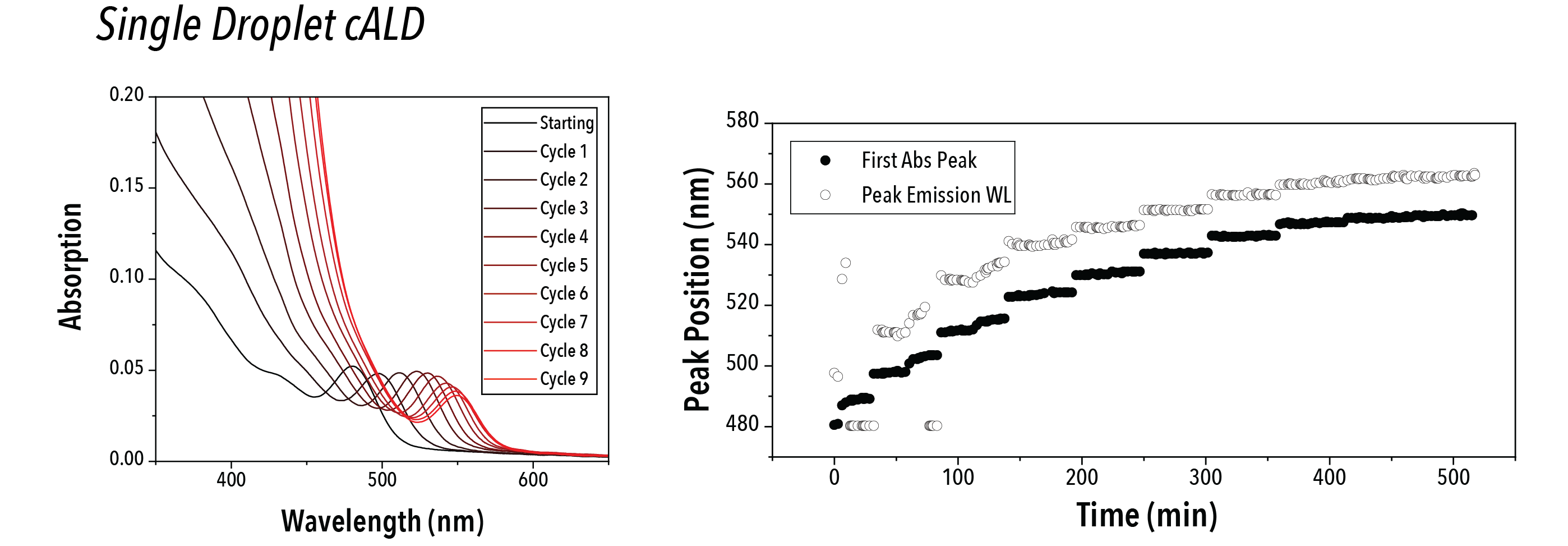(328d) Microfluidic Studies of Colloidal Atomic Later Deposition
AIChE Annual Meeting
2022
2022 Annual Meeting
Materials Engineering and Sciences Division
Synthesis and Application of Inorganic Materials II: Applications
Tuesday, November 15, 2022 - 1:15pm to 1:30pm
Using the shelling of cadmium sulfide (CdS) onto cadmium selenide (CdSe) quantum dots (QDs) as a case study, we developed a single droplet flow chemistry platform to automatically investigate the full cALD cycles in sequence, using only a 10 mL droplet. The developed platform is fully modular in design and contains a reagent addition, an oscillatory reactor, online spectral monitoring, and in-line phase separation module. Using this reactor, reagent addition sequences can be varied, and phases separated and purified, without reactor reconfiguration or user intervention. A typical full reaction cycle includes the addition of oleylamine in toluene, followed by the addition and removal of sodium sulfide in formamide, washing of the reaction phase droplet with formamide, addition and removal of cadmium acetate in formamide, then additional formamide washing. Following each reagent addition, the biphasic droplet is oscillated in the reactor module by alternating between forward and reverse flow of the inert gas carrier phase. Reaction progress is monitored through a UV-Vis absorption and photoluminescence flow cell positioned at the end of the reactor coupled with automated spectra feature extraction algorithms, which are used to monitor the first absorption peak position, emission peak position and intensity, linewidth, and droplet phase lengths.
We utilized the single-droplet flow chemistry platform for the rapid mapping of the of the cALD experimental space and monitored the excitonic peak shift and kinetics during each cALD half cycle. With the optimized conditions established, 9 full cALD cycles, consisting of 63 consecutive reagent injections and phase separations, were conducted on a single droplet and monitored continuously over more than 500 optical spectra. The layer-by-layer addition of CdS in these 9 cycles resulted in a first absorption peak shift of 70 nm without losing any of the optical features of the starting QDs.
The modular flow chemistry platform presented in this work offers facile access to high-dimensional reaction spaces that are otherwise highly challenging to optimize and explore. Further implementation of the designed single-droplet system could help to unlock more complex heterostructure synthesis routes through high efficiency screening across a wide range of nanoparticles. Furthermore, this reactor design has direct applications in many dynamic multistage and multiphase reaction processes throughout nanoscience and chemistry.
References
[1] J. Am. Chem. Soc. 2012, 134, 45, 18585–18590
[2] ACS Materials Lett. 2020, 2, 9, 1182–1202

